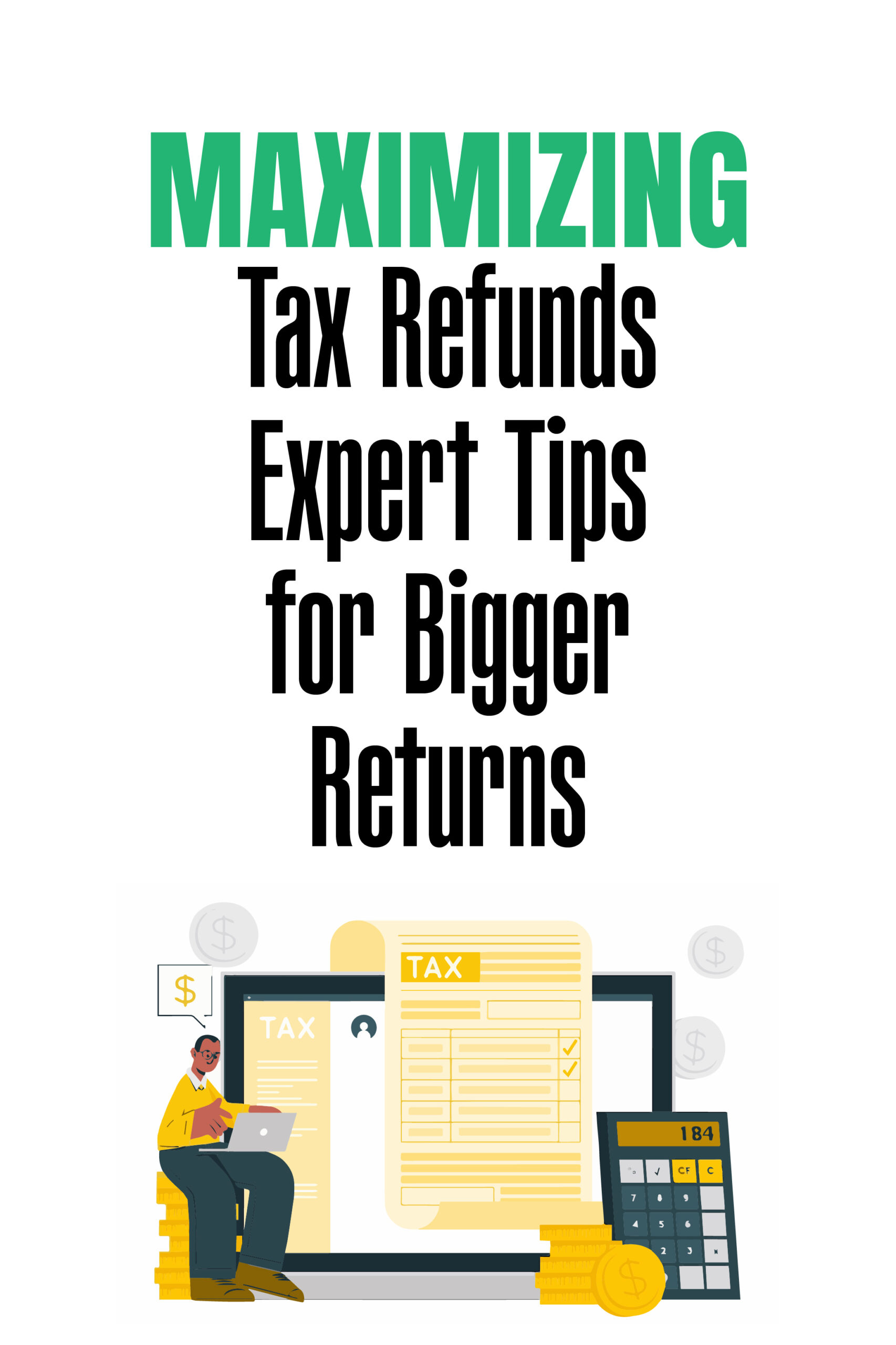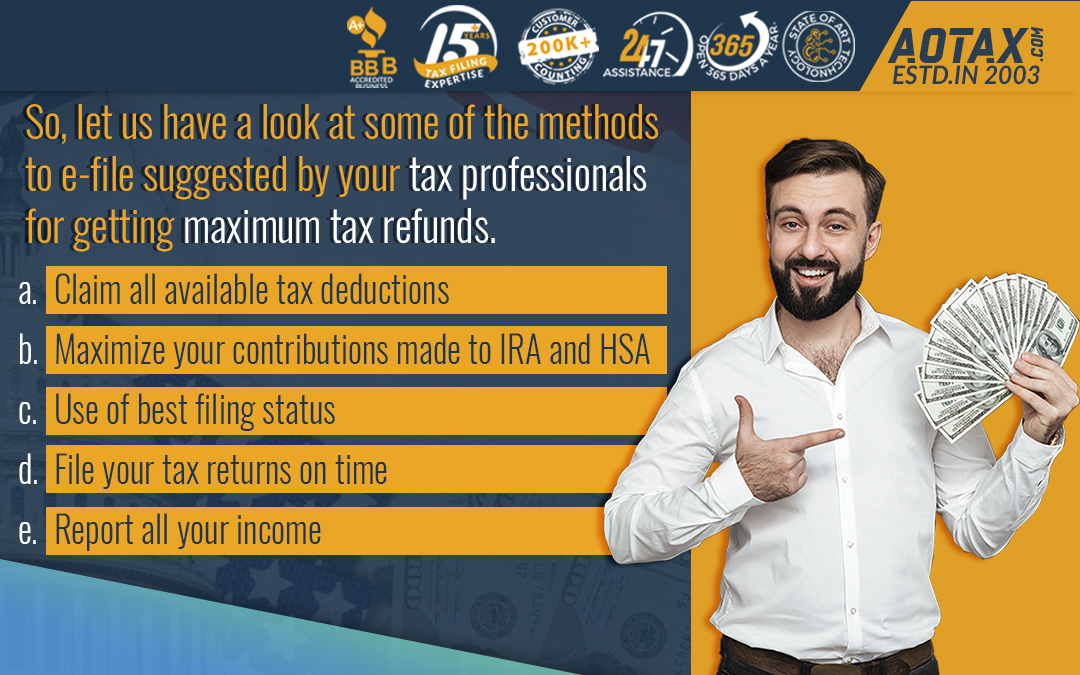To maximize tax refunds, claim all eligible deductions and credits. Keep organized records and receipts throughout the year.
Maximizing your tax refund starts with understanding eligible deductions and credits. Many taxpayers overlook valuable opportunities to reduce their taxable income. Keeping detailed records and receipts ensures you can claim every deduction available. Simple steps, like contributing to retirement accounts or making charitable donations, can significantly impact your refund.
Consult a tax professional for personalized advice to optimize your return. By staying informed and organized, you can make the most of your tax situation. Remember, diligent planning and accurate record-keeping pave the way for a larger refund. Taking these proactive measures can lead to substantial financial benefits.

Credit: providencefinancialinc.com
Tax Planning Basics
Start early to avoid last-minute stress. Gather all important documents. Keep records of income and expenses. Use a checklist to track items. Organize receipts and forms in folders. Plan ahead to avoid mistakes.
Learn about common deductions to save money. Charitable donations can lower taxes. Medical expenses may qualify for deductions. Education costs can be deducted too. Keep records of all expenses for proof. Use tax software to find deductions.
Common Tax Deductions
You can claim a home office deduction. Your workspace must be used exclusively for work. You can deduct a portion of your rent, utilities, and insurance. Keep detailed records of your expenses. A simple formula helps to calculate the deduction.
Medical expenses can be deducted if they exceed 7.5% of your adjusted gross income. This includes doctor visits, prescriptions, and even medical equipment. Save all receipts and invoices. Only unreimbursed costs are deductible.
Tax Credits
Tax credits can significantly boost your tax refunds. Strategically claiming eligible credits ensures more money in your pocket.
Education Credits
Education credits help lower your tax bill. These credits cover tuition and fees. They also help with books and supplies. The American Opportunity Credit is for students. This credit can be worth up to $2,500. The Lifetime Learning Credit helps anyone taking classes. This credit can be worth up to $2,000. Save all receipts and records. These documents help prove your expenses.
Energy-efficient Upgrades
Energy-efficient upgrades can save money on taxes. These upgrades include solar panels and insulation. They also include energy-efficient windows and doors. The Energy Efficient Home Improvement Credit can help. This credit covers 30% of the cost. Keep all receipts and records. These documents prove your expenses and ensure you get the credit.

Retirement Contributions
Contributing to an IRA can reduce taxable income. There are two types: Traditional and Roth IRAs. Traditional IRAs offer tax-deductible contributions. Roth IRAs provide tax-free withdrawals in retirement. It’s important to check the annual limits for contributions. For 2023, the limit is $6,500 for those under 50. For those over 50, the limit is $7,500.
Contributing to a 401(k) can significantly impact tax refunds. Contributions are made with pre-tax dollars. This reduces taxable income. Employers often match contributions. Take advantage of this free money. For 2023, the contribution limit is $22,500. Those over 50 can contribute an additional $7,500. This is known as the catch-up contribution.
Charitable Donations
Charitable donations can help maximize your tax refunds. Donations must be given to a qualified organization. Gifts to friends or family do not count. Check the IRS website for a list of eligible organizations. Monetary donations and goods both qualify. Keep a receipt for every donation.
Always keep detailed records of your donations. Save receipts and bank statements. For donations over $250, a written acknowledgment from the charity is required. This acknowledgment should state the amount donated and whether you received any goods in return. Proper documentation ensures you can claim your deductions without issues.

Credit: www.wjbf.com
Investment Strategies
Capital gains happen when you sell investments for more money than you spent. These gains can lead to higher taxes. One way to reduce taxes is to hold investments for over a year. This qualifies for lower long-term capital gains tax rates.
Tax-loss harvesting helps offset gains. By selling losing investments, you can reduce taxable income. This strategy works well at year-end. Reinvest in a similar asset to maintain your portfolio balance. Remember, the IRS has rules to prevent abuse.
Self-employment Tips
Keep track of all your business expenses. Save receipts for everything you buy. This includes office supplies, travel costs, and marketing. Use a dedicated business account for expenses. This makes it easier to track your spending. Many business expenses are tax-deductible. This reduces your taxable income. Lower taxable income means a higher tax refund.
Pay estimated taxes every quarter. This helps avoid large tax bills at year-end. Use last year’s tax return to estimate payments. Set aside money each month for taxes. Missing estimated tax payments can result in penalties. Use online tools to calculate what you owe. Keep records of all payments made. Proper planning ensures you get a maximum refund.

Credit: www.aotax.com
Professional Assistance
Hiring a tax professional can be very helpful. They know all the tax laws and rules. They can find deductions and credits you might miss. This can lead to a bigger tax refund. Tax professionals can also help with complex tax situations. They will make sure your tax return is accurate and complete. They can also offer advice for future tax years. This can save you money in the long run.
Tax software is a great tool for many people. It guides you through the tax filing process step by step. Many software options offer easy-to-use interfaces. They also provide error checks to ensure accuracy. Some popular tax software includes TurboTax, H&R Block, and TaxAct. These programs can help find deductions and credits. They often have free versions for simple tax returns. Tax software is a cost-effective way to file taxes.
Frequently Asked Questions
How Do I Get The Biggest Tax Refund?
To get the biggest tax refund, claim all eligible deductions and credits. Maximize retirement contributions and file early. Use tax software or consult a tax professional. Review last year’s return for missed deductions.
How Can I Legally Maximize My Tax Refund?
Maximize your tax refund by claiming all eligible deductions and credits. Contribute to retirement accounts. Keep organized records. Use tax software or consult a professional. Adjust your withholding to avoid overpayment.
How To Get A $10,000 Tax Refund?
To get a $10,000 tax refund, maximize deductions and credits. File accurately and on time. Consult a tax professional for personalized advice. Ensure you claim all eligible expenses. Review your tax situation annually.
How To Get $7000 Tax Refund?
To get a $7000 tax refund, maximize your deductions and credits. File your taxes accurately and on time. Use tax software or consult a professional. Keep all necessary documentation. Verify your eligibility for specific tax benefits.
Conclusion
Maximizing your tax refunds requires strategic planning and smart decisions. Use deductions and credits to your advantage. Stay organized and keep thorough records. Consult with a tax professional for personalized advice. Follow these tips to ensure you get the most out of your tax returns.
Start preparing now for a stress-free tax season.

